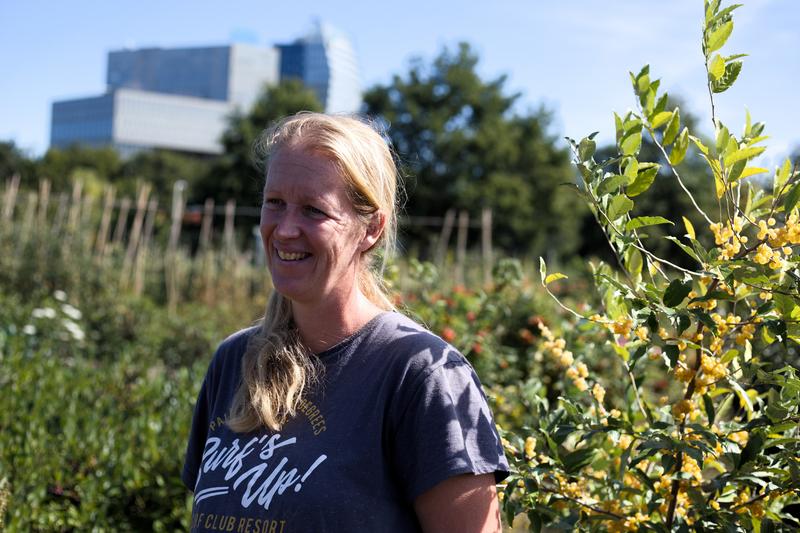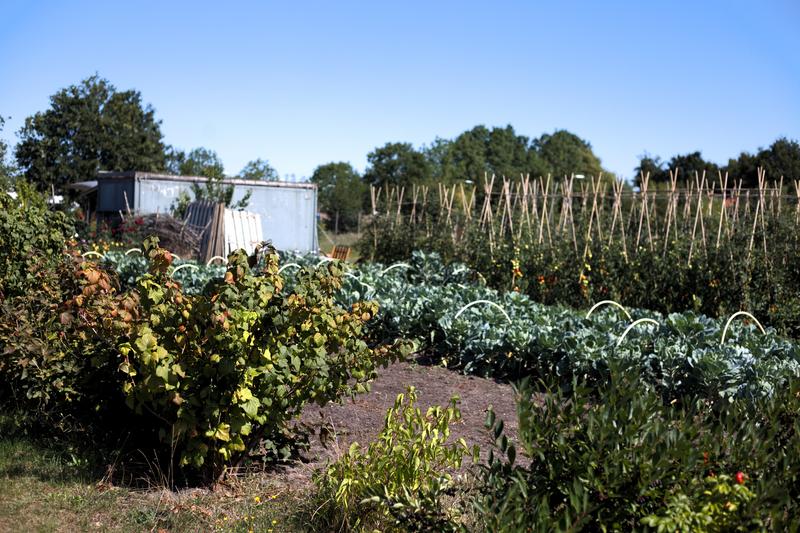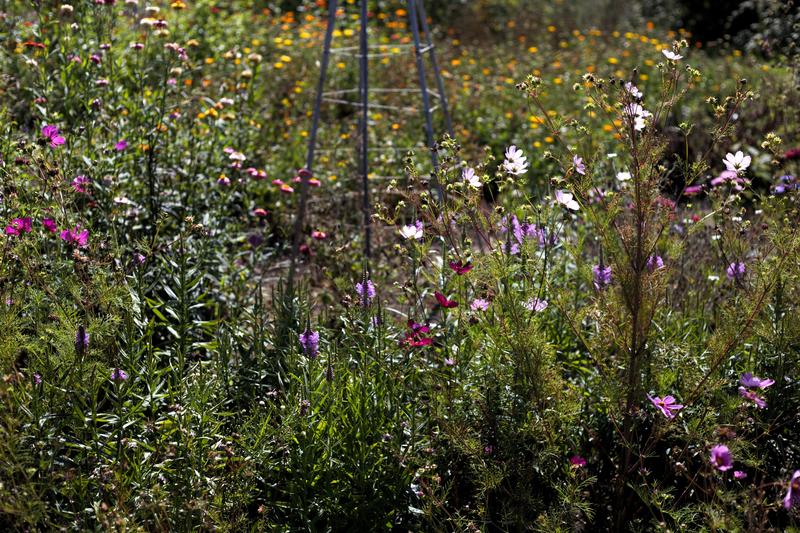“The solution is not in technology, but in the community”
When land is scarce and expensive, efficiency and productivity are imperative in agriculture. But an example from the Netherlands shows that the community can play a role in supporting a different type of agriculture.

Credit: Jelena Prtorić
In the land of intensive farming, Joke Wierenga is an exception. Her small farm outside of the city of Zwolle, in the eastern part of the Netherlands, doesn’t rely on subsidies or chemical products to improve yield, but rather turns to the community for support, with local residents becoming members of the garden.
“People pay upfront for the produce, and then, they need to trust me as a farmer that I will do my best, and that the produce will meet their expectations,” she explains. Wierenga worked as a maths and science teacher until seven years ago, when she visited an urban garden, and decided to do something similar herself.
Today, she runs a market garden, a form of agriculture that is environmentally friendly, and seeks to improve yields through high rotation and a broad range of crops. In most market gardens, the farmers sell produce directly to their customers, if possible. The tradition of market gardens can be traced back to the Middle Ages, Wierenga explains, when food was grown around the towns. With the development of farming technology and rising populations, food production moved away from the cities, and the system of farming became heavily mechanised in order to secure higher yields and be able to feed the population.
Market gardens represent an attempt to bring food production closer to the population again. Every week, Wierenga notifies the members about the progress of the yields, and they come by and pick up their share. Some volunteer in the garden and help with planting and weeding. But this system also provides the security small farmers need to survive.
“A farmer runs a lot of risks when it comes to yields,” says Wierenga. “In a ‘community-supported agriculture system’ (CSA), the customers are also members of a garden for at least one year, and share the risks. [Since the members pay upfront], I know what my income is going to be already in March, and that makes all the difference,” she explains.
Creating community
Wierenga’s land is owned by the local government, and she leases it for only €1000 a year. Today, she has a community of 100 members, and with the money from the membership and educational activities she organises with schools on the farm, Wierenga is left with an income of approximately €15,000 per year. However, she has no guarantees that she’ll be able to work in the garden for five or ten years. The local government initially bought it with the intent of building housing, but this was opposed by the local community, who wanted to preserve it as one of the rare green spaces in the area.

Credit: Credit: Jelena Prtorić
In August 2022, on her farm, the flowers are blooming; there are courgettes, squashes and cabbages waiting to be picked. There are fruit trees and bushes adorned with red and purple berries. The planting, weeding and picking are all done by hand, and Wierenga is mindful of keeping the patches of high grass intact, as well as strips of flowers for the bees, butterflies and other insects. She doesn’t use pesticides or synthetic fertilizers, and she grows vegetables according to the standards of organic agriculture. However, she is not a licenced organic farmer. “You have to pay for the licence, and although the cost is not high, it adds to the administrative burden. I want to experiment with different types of vegetables, and I have so many different trees and shrubs that I think it would be a nightmare to try to categorise all this,” she says.
Wierenga would not have been able to simply buy land and start a larger farm. According to data from Eurostat, the statistical office of the European Union, the Netherlands has the highest purchase price of arable land, on average, €69,632 per hectare, which makes it difficult to buy land. And for those who are already landowners, or who rent farming land, it is imperative to produce efficiently and abundantly. Today, despite its small surface area, the Netherlands is one of the biggest agricultural powerhouses in the world, and the second biggest exporter of agricultural goods (in terms of exports value) after the US. At the same time, the percentage of land dedicated to organic farming remains low, at less than 5 %, while the EU average reached 9.1 % in 2020.
In the summer of 2022, the Dutch farmers’ protests, which saw them blocking roads with tractors and dumping manure on highways, hit headlines around the globe. The protests were triggered by the government’s proposals for tackling nitrogen pollution that would halve the emissions from fertilised soils. Although the levels of animal manure produced have decreased since the 1990s, today the country still needs to dispose of 471 million kilograms of manure per year.
According to the estimates, this would lead to 11,200 farms having to close. As early as February 2021, Politico reported that an increasing number of Dutch farmers were considering settling abroad in a bid to “flee the environmental rules.”
Although she is not a dairy farmer herself, nor she shares their farming practices, Wierenga explains she understands the farmers’ frustration. A lot of them depend on the European farming subsidies, distributed via the Common Agricultural Policy, which further locks them into the system of intensive farming, since subsidies are allocated per hectare. “On paper, it looks like they are really rich. But all the money is locked in the land,” says Wierenga. “It is like having a big house that you can’t sell to anyone because it is just too expensive. Many farmers feel stuck. It is hard for them to convert towards a different type of agriculture.”

Credit: Jelena Prtorić